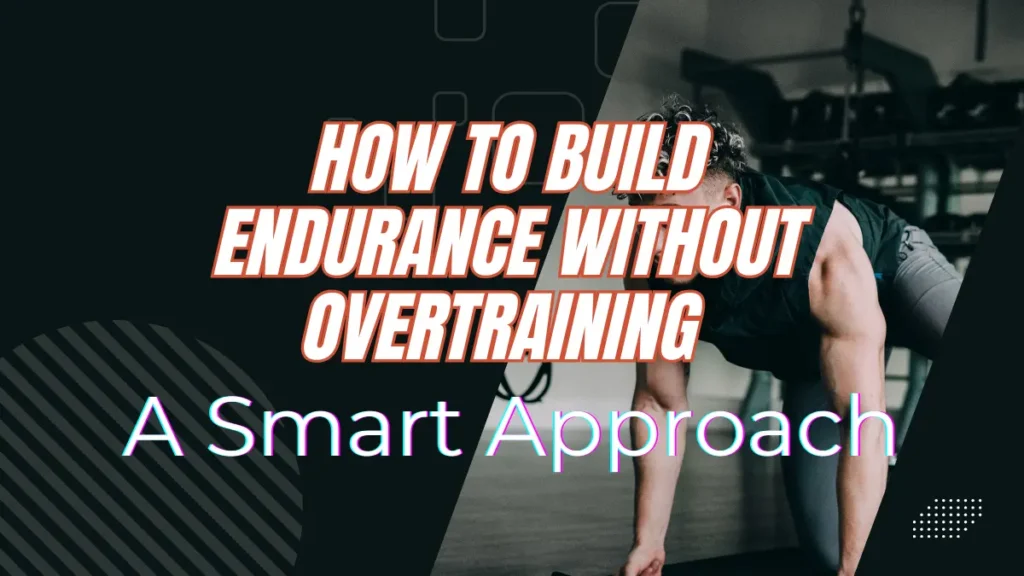Build Endurance
Introduction
Ever pushed yourself too hard in training, only to feel exhausted, sore, and demotivated the next day? You’re not alone. Many athletes and fitness enthusiasts make the mistake of overtraining in their quest for better endurance, leading to burnout or even injury.
The good news? You can build endurance effectively—without wrecking your body. The key is progressive training, smart recovery, and listening to your body.

In this guide, we’ll break down:
✔ How endurance works (and why overtraining backfires)
✔ Proven strategies to increase stamina safely
✔ Recovery techniques to prevent burnout
✔ Common mistakes to avoid
Let’s dive in!
How Endurance Works (And Why Overtraining Hurts)
Endurance isn’t just about running longer or cycling farther—it’s about your body’s ability to sustain effort efficiently. When you train for endurance, your body adapts by:
- Improving oxygen utilization (VO₂ max)
- Strengthening heart and lung function
- Enhancing muscle stamina
But overtraining disrupts these adaptations. Instead of getting stronger, you risk:
- Chronic fatigue (physical & mental)
- Weakened immunity (more colds, slower recovery)
- Increased injury risk (stress fractures, muscle strains)
So, how do you build endurance without crossing that line?
5 Smart Ways to Build Endurance Without Overtraining
1. Follow the 10% Rule (Progressive Overload)
A golden rule in endurance training: Never increase your weekly mileage or workout intensity by more than 10%.
- Example: If you run 20 km this week, aim for 22 km next week.
- Why? Gradual increases let your body adapt safely.
2. Mix Low & High-Intensity Workouts
Balance is key! Instead of only long, slow runs or bike rides, include:
- Interval training (short bursts of high effort)
- Tempo runs (moderate, sustained pace)
- Easy recovery workouts (light jogging, swimming)
This prevents plateaus and reduces injury risk.
3. Prioritize Recovery (It’s Not Laziness!)
Recovery is when your body gets stronger. Try these strategies:
- Rest days (at least 1-2 per week)
- Active recovery (yoga, walking, stretching)
- Sleep 7-9 hours (critical for muscle repair)
4. Fuel Your Body Right
Endurance training demands proper nutrition:
- Carbs = energy (whole grains, fruits, veggies)
- Protein = muscle repair (lean meats, eggs, legumes)
- Hydration (water + electrolytes for long sessions)
5. Listen to Your Body (Red Flags of Overtraining)
Ignoring warning signs leads to burnout. Watch for:
✔ Persistent fatigue (even after rest)
✔ Decreased performance (slower times, weaker lifts)
✔ Mood swings & irritability
✔ Frequent illnesses
If you notice these, take a step back and recover.
Video Credits
Common Mistakes That Lead to Overtraining
🚫 Doing too much too soon (jumping from 5K to marathon training in weeks)
🚫 Skipping rest days (“No pain, no gain” is a myth!)
🚫 Neglecting strength training (strong muscles = better endurance)
🚫 Poor sleep & nutrition (you can’t out-train a bad diet)
FAQs: Building Endurance Safely
1. How long does it take to build endurance?
- Beginner: 4-6 weeks to see noticeable improvements.
- Advanced: 8-12 weeks for significant stamina gains.
2. Can I train endurance every day?
No! 3-5 days of focused training + rest days is ideal.
3. What’s the best endurance workout for beginners?
Start with walk-run intervals (e.g., 1 min run, 2 min walk) and gradually increase.
Final Thoughts: Train Smart, Not Hard
Building endurance is a marathon, not a sprint. The best results come from consistent, balanced training—not pushing yourself to exhaustion every day.
Your next steps:
✅ Start slow (follow the 10% rule)
✅ Mix up workouts (intervals + steady-state cardio)
✅ Prioritize recovery (sleep, nutrition, rest days)
Now it’s your turn! Have you ever struggled with overtraining? What strategies helped you? Share in the comments below!**











